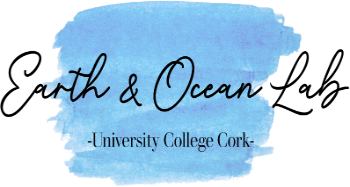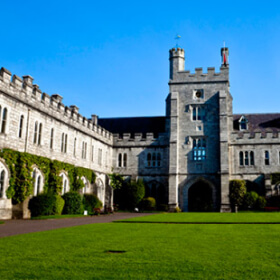Publications
CE25006 – UCC ROV Monitoring Survey
- Authors
Aaron Lim, Larissa de Oliveira, Corie Boolukos, Ruaihri Strachan, Dominic Bush, Gerard Summers, Kevin Walsh, Cara Brennan, Luca Caminiti, Irene Loriga, Bonnie Young, Julien O Malley, Holland 1 ROV technical team, Officers and Crew of the RV Celtic Explorer
- Year
- 2025
- Publication Name
- Zenodo
- Category
- Report
- Full Citation
Lim, A., Macedo Cruz de Oliveira, L., Boolukos, C., Strachan, R., Bush, D., Summers, G., Kevin, W., Brennan, C., Luca, C., Loriga, I., Bonnie, Y., & Julian, O. M. (2025). CE25006 – ROV Monitoring Survey (Version 1). Zenodo. https://doi.org/10.5281/zenodo.17036804
- Link to Publication
- /en/media/research/earthandoceanlab/UCCCruisereport(1).jpg
Abstract
3
https://www.ucc.ie/en/earthocean/
Executive Summary
This ROV monitoring survey aimed to acquire data onboard RV Celtic Explorer with the Holland 1 ROV from April 24th 2025 to May 4th 2025 in support of UCC-led scientific research projects. These projects include assessment of shipwreck-derived pollution, cold water coral reef spatio-temporal variation and mound development. As such, a geophysical array consisting of a Geomatrix G882 Magnetometer and Edgetech 4205 was used simultaneously with a hull-mounted Kongsberg EM2040 to map various potentially polluting wrecks and CWC reefs. Downward and oblique-facing ROV video footage were subsequently acquired across the mapped wrecks and reefs at a tightly spaced line spacing to ensure full coverage imagery for photogrammetric reconstruction (60% overlap required). All equipment (ROV, MBES, Geophysical array) were wet tested prior to commencement of survey operations. Mobilisation took place in Galway harbour from the 21st to 24th April and with wet testing taking place at Rossaveel on the 25th Of April. Geophysical, Hydrographic and ROV surveys of U58, SS Miami and HMS Alyssum were conducted from the 26th to 29th of April. ROV video inspection of the Piddington Mound (Belgica Mound Province) and surrounds were conducted from the 29th of April to 1st of May.
The geophysical and ROV surveys of each of the three wrecks yielded fruitful results from both an archaeological perspective, and more specifically, the standpoint of potential pollution. For U-58, the data indicated that many of the vessel’s external structures, including the majority of its reserve fuel tanks, are either missing or severely damaged, in part due to trawling. Considerable amounts of UXO were observed on the wreck. As it pertains to HMS Alyssum, the project succeeded in providing the first ever definitive confirmation of the wreck’s identity, while also enabling a detailed investigation into site layout and transformation. Finally, visual data collected at the wreck of SS Miami offered further contextualization for previous remote-sensing surveys, namely, the sheer level of disarticulation that has occurred.
ROV-video data were systematically acquired across the entire surface of three CWC mounds to construct 3D structure-from-motion photogrammetric models of each. Two of these mounds were imaged by ROV-mounted bathymetry in 2015 but were never ground-truthed. On this survey, they were fully and systematically mosaicked for the first time and will be referred to as Lucy and Mila mounds (Lucy, the mound, due east-southeast of the Piddington Mound and Mila, the mound, to the southwest of Piddington Mound). The video-data acquired across the surface of Piddington Mound will contribute to a valuable temporal dataset. Imagery of Lucy and Mila mounds will test the validity of single mound observations and ecological succession of mounds at various stages for the first time. Although these three mounds are in close proximity, preliminary review of these video-data indicate that their biological composition varies considerably.
All data are stored on 3 Hard Drives (2 x UCC; 1 x MI ROV data only). Data will be used for on-going research projects at the Earth and Ocean Lab at UCC with collaborators. This includes the IPOINT project.


